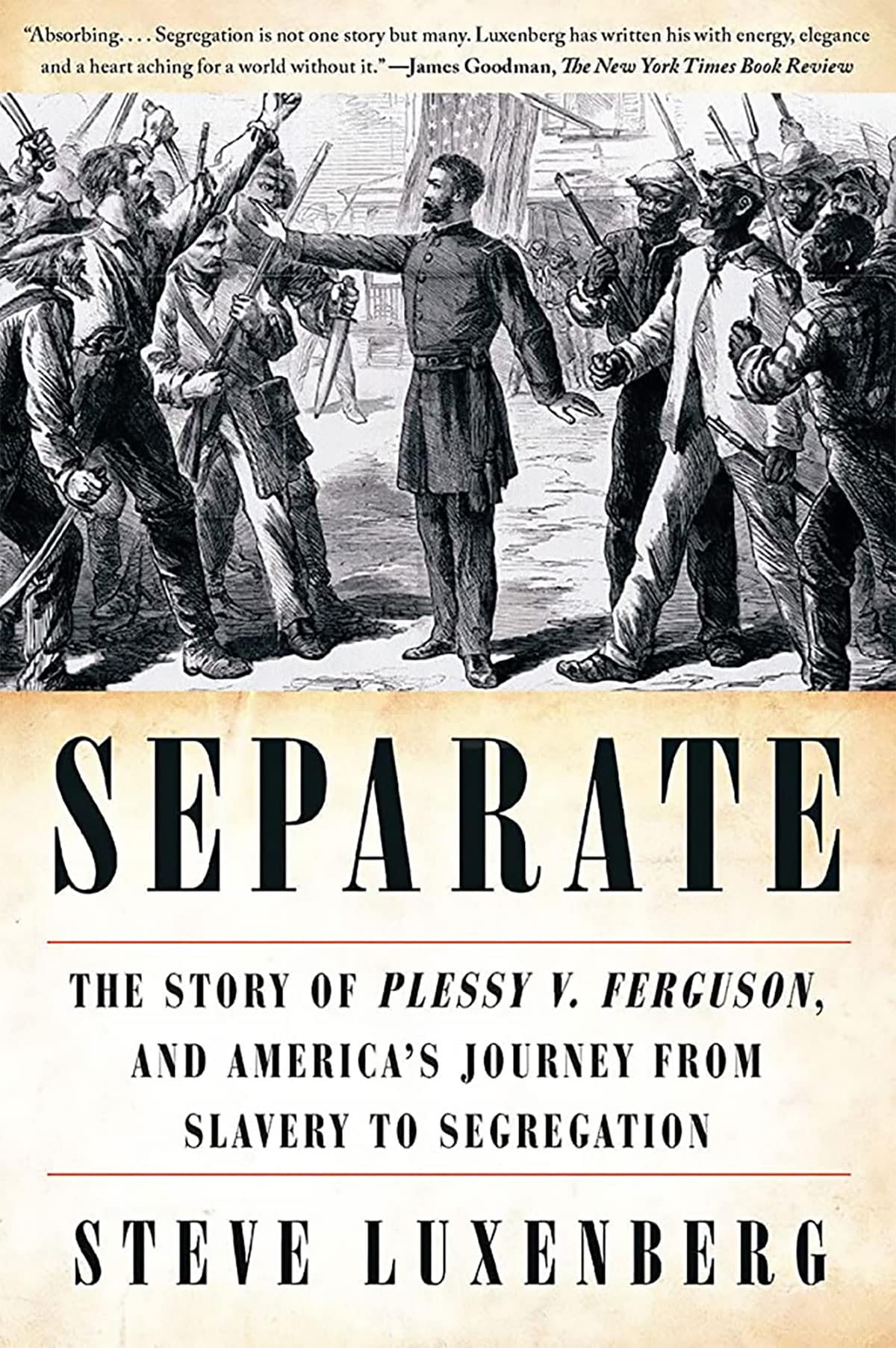Mississippi Today
Carolyn Bryant Donham has died
Woman at center of Till killing has died
The white woman at the center of the Emmett Till saga, Carolyn Bryant Donham, has died.
Megan LeBoeuf, chief investigator for the Calcasieu Parish coroner's office, confirmed Donham's death. The 88-year-old was suffering from cancer and was receiving end-of-life hospice care.
Devery Anderson, the author of “Emmett Till: The Murder That Shocked the World and Propelled the Civil Rights Movement,” said Donham's death marks the end of a chapter.
Some people “have been clinging to hope that she could be prosecuted. She was the last remaining person who had any involvement,” he said. “Now that can't happen.”
For many, “it's going to be a wound, because justice was never done,” he said. “Some others were clinging to hope she might still talk or tell the truth. … Now it's over.”
In August 1955, Till had barely turned 14 when he visited his Mississippi relatives from Chicago, only to be beaten and shot to death after he reportedly wolf-whistled at Donham at a store in Money.
His mother, Mamie, decided to leave the casket open to “let the world see what they did to my boy.” More than 50,000 attended the funeral, and the photograph of his brutalized body appeared in Jet and other publications around the world.
An all-white jury acquitted Donham's then-husband, Roy Bryant, and his half-brother J.W. Milam, only for them to confess later to Look magazine they had indeed beaten and killed Till.
The injustice made international headlines and fueled the civil rights movement. Four days after Rosa Parks heard a talk about Till, she boarded a city bus in Montgomery and refused to give up her seat. She was later quoted as saying she thought about Till the whole time.
Donham had long insisted on her innocence in Till's murder, repeating that assertion in her unpublished memoir, “I Am More Than a Wolf Whistle,” but civil rights activists and others have called for her prosecution, accusing her of identifying Till to the killers.
After an intensive FBI investigation, a majority-Black Mississippi grand jury declined to indict her in 2007. Last year, another grand jury voted against indicting her.
The memoir remains sealed in the Southern Historical Collection at the University of North Carolina at Chapel Hill until 2036. But through a source, the Mississippi Center for Investigative Reporting, now part of Mississippi Today, has obtained a copy of that single-spaced, 109-page memoir, which contradicts her original statement to her husband's defense lawyer, Sidney Carlton.
In that original statement, Donham said when Bryant brought Till to her, he “was scared but hadn't been harmed. He didn't say anything. Roy asked if that was the same one, and I told him it was not the one who had insulted me.”
That is far different from her memoir, which portrays Till as fearless and her as frightened. After she denied Till was the one at the store, she claimed he “flashed me a strange smile and said, ‘Yes, it was me,' or something to that effect. … He didn't act … scared in the least.”
Davis Houck, co-author of “Emmett Till and the Mississippi Press,” said Donham's claim sounds like it was ripped from William Bradford Huie's lie-filled Look article, which depicted Till as fearless to the end.
“The idea that Till would essentially out himself in front of his kidnappers and would-be killers,” he said, “is beyond absurd.”
Dale Killinger, who as an FBI agent investigated the Till case, said Donham's claim in her memoir contradicts what she told him in 2005 — that Till said nothing when his kidnappers brought him to her.
During his investigation, he took the statements of two Black men. The first had been confronted by Bryant, who accused him of insulting Donham. She intervened and said it wasn't him, and Bryant let him go.
The second man was walking home from Money after buying molasses for his mother, only to be picked up by Bryant and his half-brother, J.W. Milam. The man quoted Donham as saying, “That's not the n—–! That's not the one.”
The man said he was tossed from the truck and lost his front teeth when he hit the ground.
Those statements dovetail with the testimony of Till's uncle, Moses Wright, who said Milam told him, “If this is not the right boy, then we are going to bring him back. If it is not the right boy, we are going to bring him back and put him in the bed.”
As Milam and Bryant left, Wright said they asked someone in the vehicle if this was the boy and that a voice replied, “Yes.”
“Was that a man's voice or a lady's voice you heard?” the prosecutor asked.
“It seemed like it was a lighter voice than a man's,” replied Wright, who later told his son, Simeon, it was a woman's voice.
In her memoir, Donham wrote that she did not wish Till any harm and that those responsible for his murder should have been held accountable.
“His death was tragic and uncalled for beyond all doubt,” she wrote. “For that, I am truly sorry. If it had been within my power to change his fate, I would have done so.”
This article first appeared on Mississippi Today and is republished here under a Creative Commons license.
Mississippi Today
On this day in 1925


MAY 19, 1925

Malcolm X was born Malcolm Little in Omaha, Nebraska. When he was 14, a teacher asked him what he wanted to be when he grew up and he answered that he wanted to be a lawyer. The teacher chided him, urging him to be realistic. “Why don't you plan on carpentry?”
In prison, he became a follower of Nation of Islam leader Elijah Muhammad. In his speeches, Malcolm X warned Black Americans against self-loathing: “Who taught you to hate the texture of your hair? Who taught you to hate the color of your skin? Who taught you to hate the shape of your nose and the shape of your lips? Who taught you to hate yourself from the top of your head to the soles of your feet? Who taught you to hate your own kind?”
Prior to a 1964 pilgrimage to Mecca, he split with Elijah Muhammad. As a result of that trip, Malcolm X began to accept followers of all races. In 1965, he was assassinated. Denzel Washington was nominated for an Oscar for his portrayal of the civil rights leader in Spike Lee's 1992 award-winning film.
This article first appeared on Mississippi Today and is republished here under a Creative Commons license.
Did you miss our previous article…
https://www.biloxinewsevents.com/?p=359877
Mississippi Today
On this day in 1896


MAY 18, 1896

The U.S. Supreme Court ruled 7-1 in Plessy v. Ferguson that racial segregation on railroads or similar public places was constitutional, forging the “separate but equal” doctrine that remained in place until 1954.
In his dissent that would foreshadow the ruling six decades later in Brown v. Board of Education, Justice John Marshall Harlan wrote that “separate but equal” rail cars were aimed at discriminating against Black Americans.
“In the view of the Constitution, in the eye of the law, there is in this country no superior, dominant, ruling class of citizens,” he wrote. “Our Constitution in color-blind and neither knows nor tolerates classes among citizens. In respect of civil rights, all citizens are equal before the law. The humblest is the peer of the most powerful. The law … takes no account of his surroundings or of his color when his civil rights as guaranteed by the supreme law of the land are involved.”
This article first appeared on Mississippi Today and is republished here under a Creative Commons license.
Did you miss our previous article…
https://www.biloxinewsevents.com/?p=359301
Mississippi Today
Renada Stovall, chemist and entrepreneur
Renada Stovall sat on the back deck of her rural Arkansas home one evening, contemplating life when she had a life-altering epiphany…
“I gotta get out of these woods.”
She heard it as clear as lips to her ear and as deep as the trees surrounding her property. Stovall's job as a chemist had taken her all over the country. In addition to Arkansas, there were stints in Atlanta, Dallas and Reno. But she was missing home, her parents and friends. She also knew, she needed something else to do.
“I thought, what kind of business can I start for myself,” said Stovall, as she watered herbs growing in a garden behind her south Jackson home. Some of those herbs are used in her all-natural products. “I know when I lived in Reno, Nevada, where it's very hot and very dry, there really weren't products available that worked for me, my hair, and my skin suffered. I've got a chemistry degree from Spelman College. I took the plunge and decided to create products for myself.”

In 2018, Stovall's venture led to the creation of shea butter moisturizers and natural soaps. But she didn't stop there, and in December 2022, she moved home to Mississippi and got to work, expanding her product line to include body balms and butters, and shampoos infused with avocado and palm, mango butter, coconut and olive oils.
Nadabutter, which incorporates Renada's name, came to fruition.

Stovall sells her balms and moisturizers at what she calls, “pop-up markets,” across the state during the summer. She's available via social media and also creates products depending on what of her ingredients a customer chooses. “My turmeric and honey is really popular,” Stovall added.
“The all-natural ingredients I use are great for conditioning the skin and hair. All of my products make you feel soft and luscious. The shea butter I use comes from West Africa. It's my way of networking and supporting other women. And it's my wish that other women can be inspired to be self-sufficient in starting their own businesses.”





This article first appeared on Mississippi Today and is republished here under a Creative Commons license.
-
SuperTalk FM6 days ago
Martin Lawrence making 3 stops in Mississippi on comedy tour
-
Our Mississippi Home5 days ago
Beat the Heat with Mississippi’s Best Waterparks
-
SuperTalk FM2 days ago
State auditor cracking down on Mississippians receiving unemployment benefits
-
Our Mississippi Home6 days ago
Charlie’s U-Pik: Opening Soon for the Summer Season
-
Mississippi News Video4 days ago
Jackson has a gang problem
-
Kaiser Health News5 days ago
Medicaid ‘Unwinding’ Decried as Biased Against Disabled People
-
Local News2 days ago
Family files lawsuit after teen’s suicide in Harrison County Jail
-
228Sports5 days ago
George County Pours Runs In 6A South State Title Victory At PRC















































